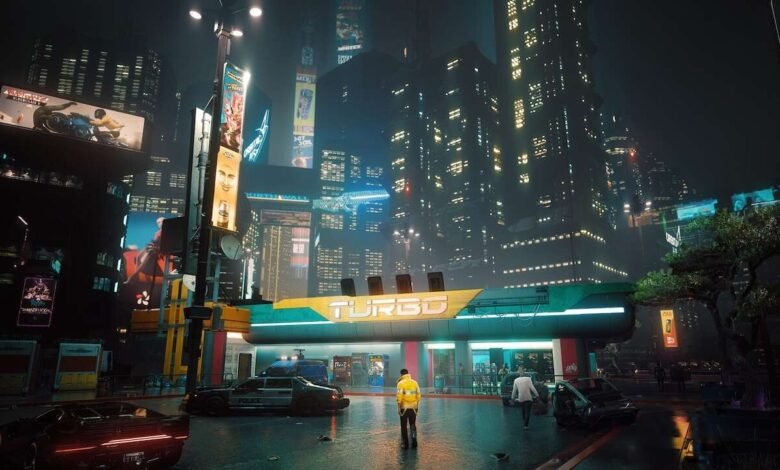Is Ray Tracing Failing to Deliver on Its Promise?

▼ Summary
– Ray tracing is a demanding, fast-evolving real-time graphics technology that simulates light bounces for realistic lighting, shadows, and reflections in games.
– Despite widespread availability in consoles and many PCs, ray tracing adoption faces skepticism due to performance impacts and often subtle or poorly implemented visual benefits in games.
– Some games effectively use ray tracing to enhance realism and streamline development, while others, especially linear or competitive titles, show minimal visible improvements that don’t justify performance costs.
– The technology remains computationally expensive, requiring upscaling solutions like DLSS or FSR, and is hindered by hardware costs, economic factors, and slow upgrade cycles among gamers.
– Ray tracing is not yet a mainstream must-have feature but is expected to grow as hardware proliferates, game development integrates it more meaningfully, and costs become more accessible.
The gaming world has always pushed technological boundaries, from handheld computing to online connectivity and especially graphics. Ray tracing represents the latest frontier in visual fidelity, promising unprecedented realism through simulated light behavior. Yet despite seven years of development and widespread hardware support, many players remain unconvinced by its practical benefits. What explains this gap between promise and perception?
Several interconnected factors contribute to this situation. Game development standards often underutilize ray tracing or implement it in barely noticeable ways. The technology itself remains immature, requiring significant computational power. Evolving gaming preferences and economic conditions surrounding hardware availability further complicate its adoption.
In pre-rendered graphics, ray tracing has existed for decades, but real-time implementation remains remarkably young. This technique calculates how light rays interact with surfaces, creating authentic shadows, reflections, and illumination without manual artist intervention. The potential is enormous, though current execution often falls short of expectations.
Hardware penetration has reached substantial levels. PlayStation 5 and Xbox Series X|S consoles, approximately 95 million units combined, all support ray tracing. Nintendo’s upcoming Switch 2 will add another capable platform, albeit with limitations. PC adoption is also significant; Steam’s hardware survey indicates nearly a third of users possess ray-tracing capable GPUs. This technology is no longer confined to an elite minority.
Implementation quality varies dramatically across titles. Some games serve as brilliant showcases. Minecraft’s RTX transformation demonstrates how simple geometry can benefit enormously from dynamic lighting, caverns become authentically dark, forests gain depth and atmosphere. Assassin’s Creed Shadows uses ray tracing to simulate seasonal and weather changes without rebuilding environments, saving development resources while enhancing visual variety.
Other titles employ more subtle but effective applications. The Spider-Man games and Remedy’s Control use reflections on glass surfaces to create believable urban environments. Alan Wake 2 leverages the technology for dynamic flashlight interactions in dense foliage, where both light and vegetation move simultaneously. These implementations enhance realism while reducing artistic workload.
However, many major releases make poor use of the technology. Linear shooters and static open worlds offer limited dynamic elements for ray tracing to enhance. In such cases, the performance cost outweighs the visual benefit. Competitive multiplayer titles like Call of Duty or Fortnite prioritize frame rates over graphical flourishes, making ray tracing an impractical luxury. Even technical directors acknowledge this; Battlefield’s team confirmed skipping ray tracing to ensure stable performance at launch.
The immaturity of real-time ray tracing remains evident. The computational demands are so intense that AI upscaling technologies like DLSS and FSR become necessary to maintain playable performance. This dependency frustrates purists who prefer native rendering. Console players face simplified choices between quality and performance modes, often sacrificing resolution for smoother gameplay.
Economic factors have also hampered adoption. GPU prices experienced significant volatility during ray tracing’s introduction, with crypto mining demand and pandemic-related shortages driving costs upward. Inflation has made high-end hardware increasingly inaccessible, delaying upgrades and limiting exposure to advanced features.
Nvidia’s historical pattern with new technologies suggests persistence. The company previously successfully introduced shaders with the GeForce 3, which eventually became fundamental to game development. A similar long-term strategy appears underway with ray tracing and AI upscaling.
The path forward requires evolution on multiple fronts. Game developers must better integrate ray tracing into core design rather than treating it as an afterthought. Hardware must become more affordable and efficient to reach critical mass. Current data shows the most common ray-tracing GPU on Steam is the five-year-old RTX 3060, indicating slower upgrade cycles than ideal.
As these elements align, ray tracing may finally deliver on its initial promise. For now, it remains a technology in transition, capable of brilliance in specific cases, but not yet essential for most gaming experiences. Players will likely remain cautious until the balance between visual payoff and performance cost becomes more favorable.
(Source: Gamespot)





